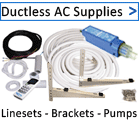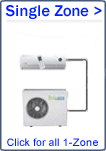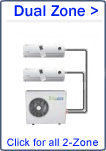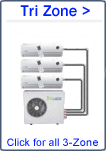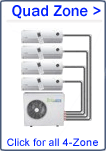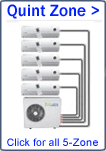Installation Tip:
* MANUFACTURER WARRANTY IS NULL AND VOID WITHOUT BEING COMPLETED (SIGNED) BY INDIVIDUAL HOLDING EITHER LOCAL-STATE HVAC OR EPA LICENSE*
Installing a split AC is easy for any AC company, but can get tricky for a homeowner.
Not only are specific tools and knowledge required to complete setup, but installation includes electrical, gas, and refrigerant connections that are often regulated by a set of laws at the state, local and federal level. As a distributor, we cannot encourage a customer or anybody without HVAC certification to install a mini split system on there own. However, with the help of online recourses we have seen many do it in the past successfully. At the same time seen some customers install
a system unprofessionally without performing all the necessary steps, which resulted in issues within the first few months of operation.
In short, you can do all the handyman work yourself and hire an AC company to finish the important - advanced procedures of the installation. For example you can drill the hole in the wall, run the copper lines and connections outside, carefully hang the indoor unit and unpack > place the outdoor unit outside on a concrete pad or flat surface. Then have the HVAC contractor complete the steps you can't perform / don't have tools for (vacuuming the lines, setting gauges, couplings, releasing refrigerant, testing for leaks etc). Also, remember no matter how good an install kit the manufacturer provides, these steps are a must for any mini split installation. Some online retailers will make you believe there package systems are more user-friendly or a 'plug-n-play' by marketing the install kits as "quick connect". But this is not true. Our install kits are quick connect as well, but this doesn't mean the difficult steps are somehow skipped. Nor does it guarantee a defect free unit. For example if the copper lines have a small hole and are not tested for leaks, the refrigerant will slowly leak out within 2-3 months, your AC will stop working and you will end up paying $500+ to have the system recharged and lines re-routed for what otherwise would have been a quick free of cost replacement. So it's worth having it installed the right way. Local HVAC companies typically charge by the hour for service and above mentioned process should not take more than 1-2 hours (time will vary for each application). But if they install the whole system out of box, the labor charge will of course be higher. Doing the simple steps and leaving the hard stuff for the pros not only guarantees a long-lasting system, but also ensures an energy efficient, effective installation. See below short general installation breakdown.
|



